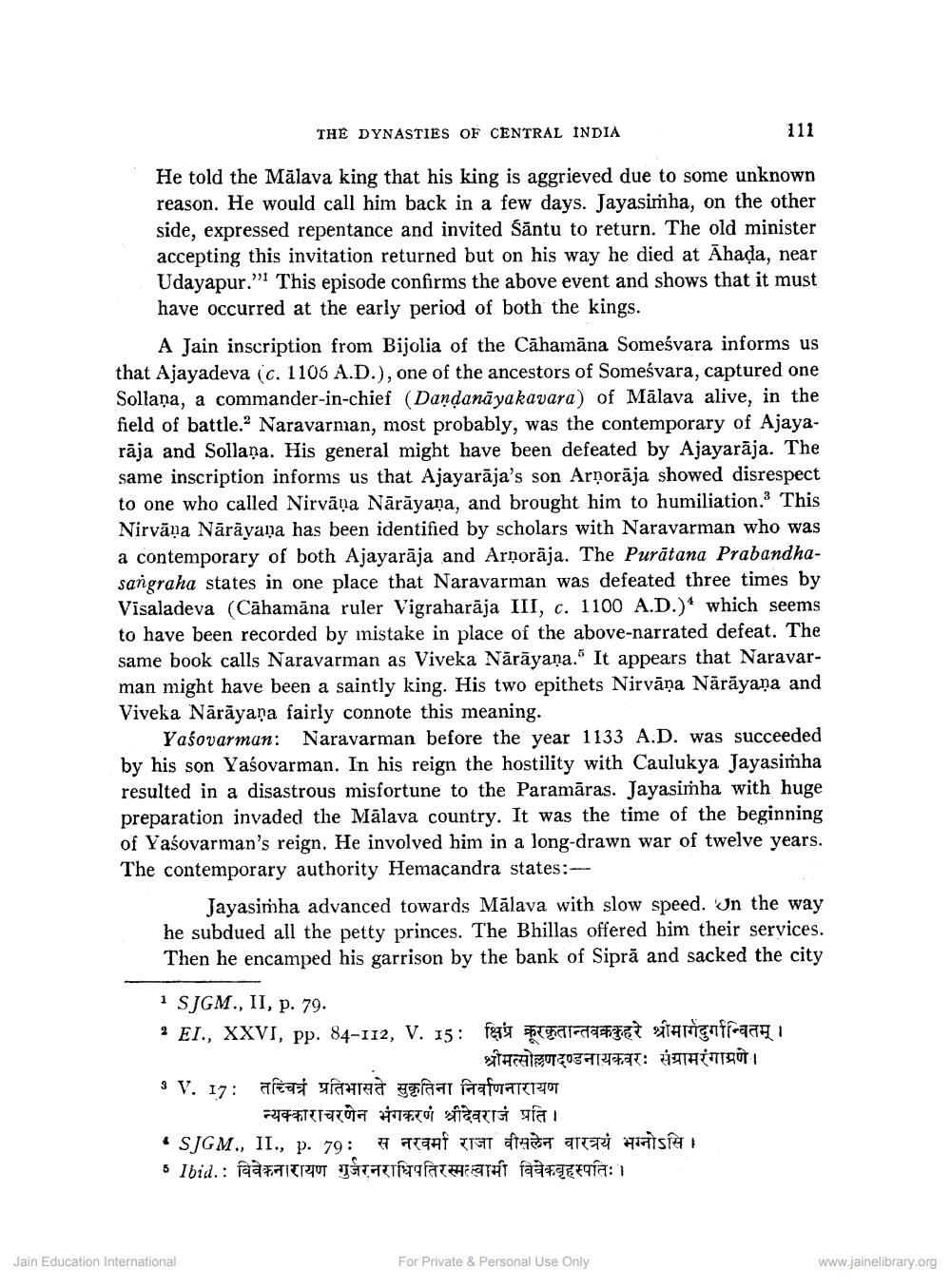________________
THE DYNASTIES OF CENTRAL INDIA
111
He told the Mālava king that his king is aggrieved due to some unknown reason. He would call him back in a few days. Jayasimha, on the other side, expressed repentance and invited śāntu to return. The old minister accepting this invitation returned but on his way he died at Ahada, near Udayapur." This episode confirms the above event and shows that it must have occurred at the early period of both the kings.
A Jain inscription from Bijolia of the Cāhamāna Someśvara informs us that Ajayadeva (c. 1105 A.D.), one of the ancestors of Someśvara, captured one Sollana, a commander-in-chief (Dandanāyakavara) of Mālava alive, in the field of battle. Naravarman, most probably, was the contemporary of Ajayarāja and Sollana. His general might have been defeated by Ajayarāja. The same inscription informs us that Ajayarāja's son Arnorāja showed disrespect to one who called Nirvāņa Nārāyaṇa, and brought him to humiliation. This Nirvāṇa Nārāyana has been identified by scholars with Naravarman who was a contemporary of both Ajayarāja and Arnorāja. The Purātana Prabandhasangraha states in one place that Naravarman was defeated three times by Visaladeva (Cāhamāna ruler Vigraharāja III, c. 1100 A.D.)* which seems to have been recorded by mistake in place of the above-narrated defeat. The same book calls Naravarman as Viveka Nārāyana." It appears that Naravarman might have been a saintly king. His two epithets Nirvāṇa Nārāyana and Viveka Nārāyaṇa fairly connote this meaning.
Yaśovarman: Naravarman before the year 1133 A.D. was succeeded by his son Yasovarman. In his reign the hostility with Caulukya Jayasimha resulted in a disastrous misfortune to the Paramāras. Jayasimha with huge preparation invaded the Mälava country. It was the time of the beginning of Yasovarman's reign. He involved him in a long-drawn war of twelve years. The contemporary authority Hemacandra states:
Jayasimha advanced towards Mālava with slow speed. In the way he subdued all the petty princes. The Bhillas offered him their services. Then he encamped his garrison by the bank of Siprā and sacked the city
· SJGM., II, p. 79. 2 EI., XXVI, pp. 84-112, V. 15: fegy alamat sa mentiranti
श्रीमत्सोल्लणदण्डनायकवरः संग्रामरंगाग्रणे। 3 V. 17: Tati ufahrad gerai farafuarcia
न्यक्काराचरणेन भंगकरणं श्रीदेवराज प्रति। · SGM., II., p. 79: anf ist an arra SA 5 Ibid.: faitTOT TATATATHan faa katafa: 1
Jain Education International
For Private & Personal Use Only
www.jainelibrary.org




